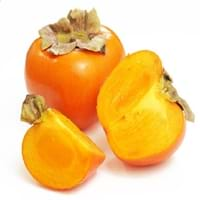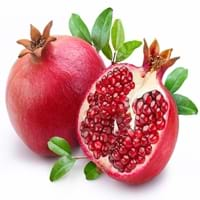Health Benefits
Anti-oxidant properties, Beneficial in curing fever, Cancer prevention, Heart care, Reduces nervous tension
Cancer prevention, Heart care, Helps in cartilage regeneration, Improves stomach health, Increase in haemoglobin, Increases metabolic rate, Prevents constipation
General Benefits
Anti-inflammatory properties, Boosts immune system, Controls blood pressure, Digestive aid, Eye care, Fights against infections, Helps in weight loss, Improves blood circulation
Boosts immune system, Controls blood pressure, Controls blood sugar levels, Digestive aid, Maintains healthy cholesterol level
Skin Benefits
Anti-aging benefits, Brightens and lightens complexion, Reduces wrinkles
Anti-aging benefits, Skin rejuvenation, Treatment of acne
Hair Benefits
Good conditioner, Promotes longer and healthier hair, Treatment of dandruff
Prevents hair loss, Promotes longer and healthier hair, Treatment of dandruff
Allergy Symptoms
Abdominal pains, Anaphylaxis, Inflammation
Abdominal pains, Anaphylaxis, Itching
Side Effects
Affects blood glucose levels, Decrease in blood sugar levels, Coagulation
Allergic reaction, Cold, Breathing difficulty, Irritation, Swelling
Best Time to Eat
Along with meal, As a snack in the late afternoon, Don't consume at night and before bed, Eat the fresh ones, avoid mixing with any other foods, don't eat after meal.
Best if taken as a breakfast (or empty stomach), As a snack in the late afternoon, Eat the fresh ones, avoid mixing with any other foods, don't eat after meal., Morning time (before lunch)
Vitamin A (Retinol)
Not Available
Vitamin B1 (Thiamin)
Not Available
Vitamin B2 (Riboflavin)
Not Available
Vitamin B3 (Niacin)
Not Available
Vitamin B5 (Pantothenic Acid)
Not Available
Vitamin B6 (Pyridoxin)
Not Available
Vitamin B9 (Folic acid)
Not Available
Vitamin C (Ascorbic Acid)
Vitamin E (Tocopherole)
Not Available
Vitamin K (Phyllochinone)
Not Available
Lutein+Zeaxanthin
Not Available
Calories in Fresh Fruit with Peel
Not Available
Calories in Fresh Fruit without Peel
Not Available
Calories in Frozen Form
Not Available
Not Available
Calories in Canned Form
Not Available
Not Available
Type
Berry, Tree fruit
Tree fruit
Season
Autumn, Winter
Autumn
Varieties
Early Golden, John Rick, Miller, Woolbright and Ennis
Balegal, Crab, Cloud, Francis, Freshman and Granada
Color
Orange, Red, Yellow
Dark red, Light pink-red
Origin
Eastern United States
India, Iran
Soil Type
Sandy loam, Well-drained
Clay, Sand
Climatic Conditions
Can tolerate wide range of climates, Sunny
Cold, Dry, Hot
Facts about
- It is said that formation of seeds inside the persimmon fruit shows what type of winter is coming(type of snow).
- There are about 2000 varieties of this fruit.
- The American persimmon has another name 'Possumwood'.
- Pomegranate means apple with many seeds.
- It was called as the “apple of Grenada” in early English.
- In Hinduism, this fruit symbolizes prosperity and fertility.
- Pomegranate trees can live upto 200 years.
Other Countries
Azerbaijan, Brazil, Costa Rica, Japan, Korea, Pakistan
Africa, India, Middle east, Pakistan
Top Importer
United States of America
Europe
Top Exporter
United States of America
India
Botanical Name
Diospyros virginiana
Punica granatum
Synonym
Not Available
Punica malus
Subkingdom
Tracheobionta
Tracheobionta
Division
Magnoliophyta
Magnoliophyta
Class
Magnoliopsida
Magnoliopsida
Subclass
Dillenhidae
Rosidae
Family
Ebenaceae
Lythraceae
Species
D. virginiana
P. granatum
Generic Group
Not Available
Pomegranate
Difference Between American Persimmon and Pomegranate
We might think that American Persimmon and Pomegranate are similar with respect to nutritional value and health benefits. But the nutrient content of both fruits is different. American Persimmon and Pomegranate Facts such as their taste, shape, color, and size are also distinct. The difference between American Persimmon and Pomegranate is explained here.
The amount of calories in 100 gm of fresh American Persimmon and Pomegranate with peel is 127.00 kcal and Not Available and the amount of calories without peel is Not Available and 83.00 kcal respectively. Thus, American Persimmon and Pomegranate belong to and category.These fruits might or might not differ with respect to their scientific classification. The order of American Persimmon and Pomegranate is Ericales and Myrtales respectively. American Persimmon belongs to Ebenaceae family and Pomegranate belongs to Lythraceae family. American Persimmon belongs to Diospyros genus of D. virginiana species and Pomegranate belongs to Punica genus of P. granatum species. Beings plants, both fruits belong to Plantae Kingdom.









